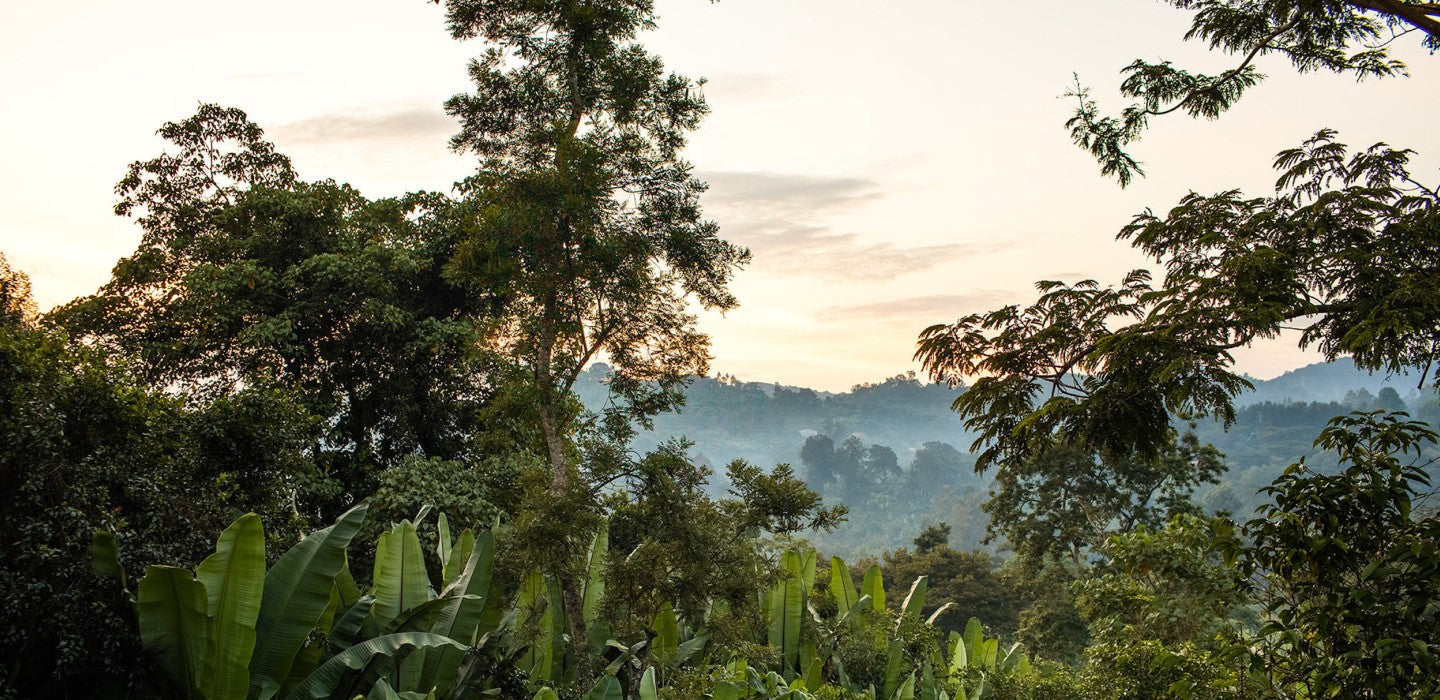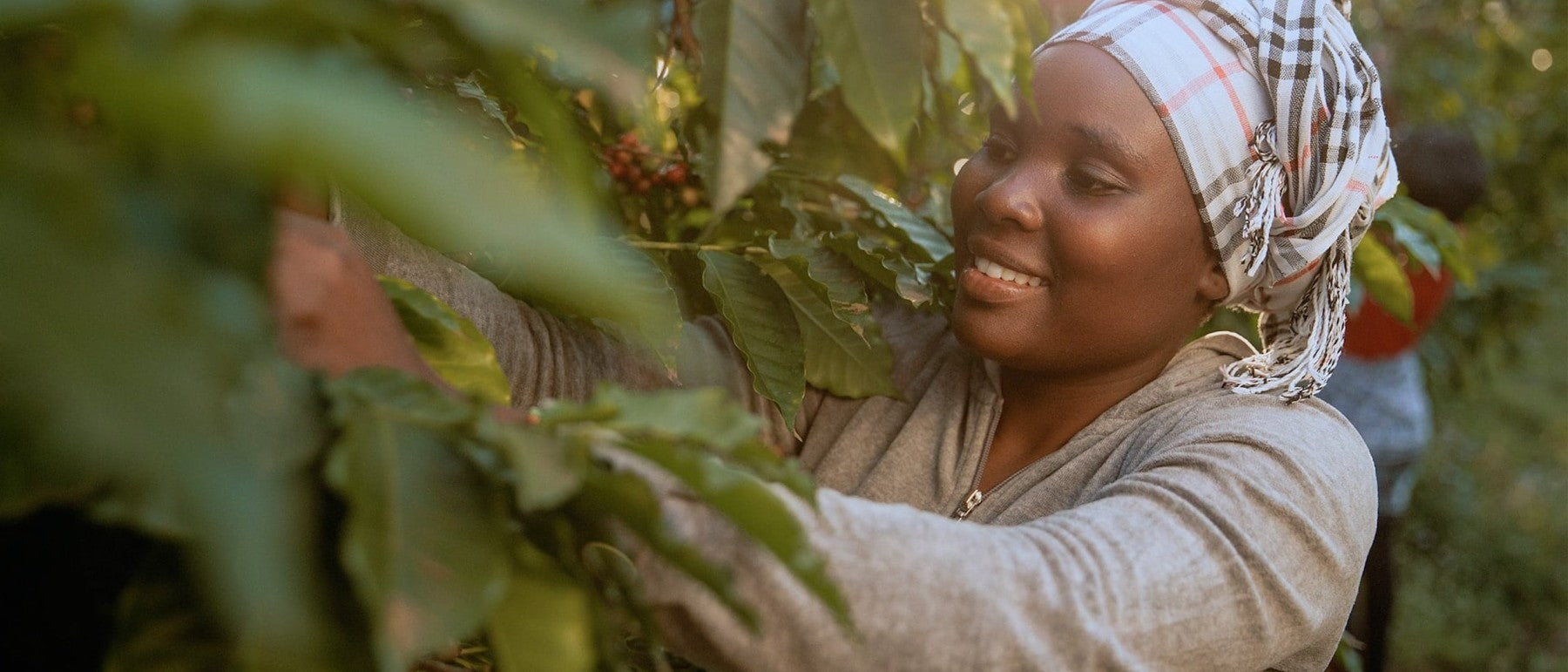The Legend of the Goats
Legend has it that we owe our coffee to goats.
The story goes like this: Goat herder Kalid tends to his flock every day on the pastures in the highlands of Yemen. One day, some goats eat red berries from bushes and suddenly become much livelier and more enduring. They don't even rest at night. Out of curiosity, Kalid tries the berries himself and also feels the invigorating effect. The abbot of a nearby monastery hears of it and has the berries of the bushes collected to prepare an infusion. The effect is similar: the monks can pray all night without getting tired. Not wanting to do without the new drink, the monks stock up and hang the branches to dry over an open fire during the rainy season. When a branch falls into the fire, the beans char and release an aromatic scent. The monks retrieve the beans from the embers, grind them, and prepare their infusion from the powder. With the first sip, they are thrilled by the delicious taste of the new drink and its invigorating effect. The secret of the coffee beans is discovered!
The Homeland of Coffee
The original home of the coffee tree is probably Ethiopia – perhaps the province of Kaffa in the Abyssinian highlands. It is unclear whether the name of coffee comes from this alleged homeland, Kaffa, or whether it was derived from the Arabic-Turkish name for the drink, "kahwe."
The Coffee Belt
Coffee plants are selective: they thrive optimally only in the tropical equatorial climate of the "coffee belt."
This area around the equator has a humid-dry alternating climate, characterized mainly by the absence of extreme temperatures and sufficient rainfall. About 80 countries around the globe grow Arabica and Robusta plants, including Brazil, Colombia, Ethiopia, Indonesia, India, and Vietnam.
A Deep Dive into the Fascinating World of Coffee Plantations!
As we journey through vast landscapes of greens and golds, we bring you tales of the four prominent coffee-growing nations. Learn about their fascinating narratives, practices, and flavors that transform the humble coffee seed into stimulating sips of delight.
Brazil

Brazil, the largest producer of coffee, significantly contributes to the world's appetite for Arabica coffee. It was once the powerhouse of 80% of global coffee up until 1920. While other nations have since amplified their production, Brazil continues to reign supreme in the coffee landscape.
After the devastating frosts of 1975, Brazil improvised and established new plantations in the temperate south-eastern region, majorly in the state of Minas Gerais. Today, half of Brazil's coffee comes from this region.
Little known fact, ripe coffee cherries usually present themselves in bold, deep red hues. Other times, cherries may ripen to turn yellow, and rarely, even orange. The exception? The coffee cherries found in the Amazon region and the country's northeast.
-
World Market Share
- Rank in Production: #1
- Share of total production: 35%
-
Coffee-Trivia
- Harvest Season: October to December
- Types of Coffee: 100% Arabica
- Processing: Both wet and dry
-
Coffee Palate
- Taste Profile: Low acidity, full-bodied, sweet flavor, often with chocolate and nut undertones
A fun fact for the coffee lover - consumption goes hand in hand with production. Brazilians themselves consume nearly half of their coffee!
Ethiopia

Ethiopia holds the distinction of being the cradle of Arabica coffee. This African nation largely depends on traditional, pesticide-free cultivation handled by small farmers, rendering most Ethiopian coffee organically grown.
Nothing can beat the wild and untamed beauty of Ethiopian coffee, whether it's a wild coffee in a forest or a lush tree cresting in the lowlands.
-
World Market Share
- Rank in Production: #5
- Share of total production: 5%
-
Coffee-Trivia
- Harvest Season: October to January
- Types of Coffee: Arabica
- Processing: Both wet and dry
-
Coffee Palate
- Taste Profile: Diverse flavors with complex fruity and floral notes
Highland coffee from Ethiopia is lauded as some of the world's finest, making it one of the country's most prized export commodities. We commit to supporting these hardworking communities through the Organic Coffee WASH Project.
Vietnam

Introduced by French colonialists in the mid-19th century, coffee was grown in Vietnam to ensure a steady supply. This practice was accelerated in the 20th century to capitalize on favorable market prices. Today, Vietnam has emerged as the world's second-largest coffee producer.
While Robusta predominantly holds the Vietnamese coffee market, a small portion of Arabica is also grown.
-
World Market Share
- Rank in Production: #2
- Share of total production: 14%
-
Coffee-Trivia
- Harvest Season: October to December
- Types of Coffee: 95% Robusta, 5% Arabica
- Processing: Both wet and dry
-
Coffee Palate
- Taste Profile: Slightly bitter, robust, and earthy with dark chocolate tones
Guatemala

Weaving coffee into the economic fabric of Guatemala was the doing of General Justo Rufino Barrios in 1871. Unfortunately, this development resulted in the indigenous populace losing their land. Large coffee plantations proliferated, and by 1880, coffee accounted for 90% of the country's total export quantity.
Several farmers switched to macadamia and avocados post the coffee crisis in 2001. Still, Guatemala remains amongst the top 10 coffee producers worldwide. Majority of the harvest is Arabica, grown in volcanic, fertile, nutrient-rich soils.
-
World Market Share
- Rank in Production: #8
- Share of total production: 2.5%
-
Coffee-Trivia
- Harvest Season: August to March
- Types of Coffee: Mostly Arabica, with a small portion of Robusta
- Processing: wet
-
Coffee Palate
- Taste Profile: A range from light, sweet, fruity, and complex notes to heavier, chocolatey undertones
Piquing your interest further, we invite you to explore more about harvesting, processing, and the roasting process of these exhilarating beans. Step into the wonderful world of coffee with us and relish the eclectic journey, one delicious sip at a time.
You may also be interested in:


Leave a comment
This site is protected by hCaptcha and the hCaptcha Privacy Policy and Terms of Service apply.